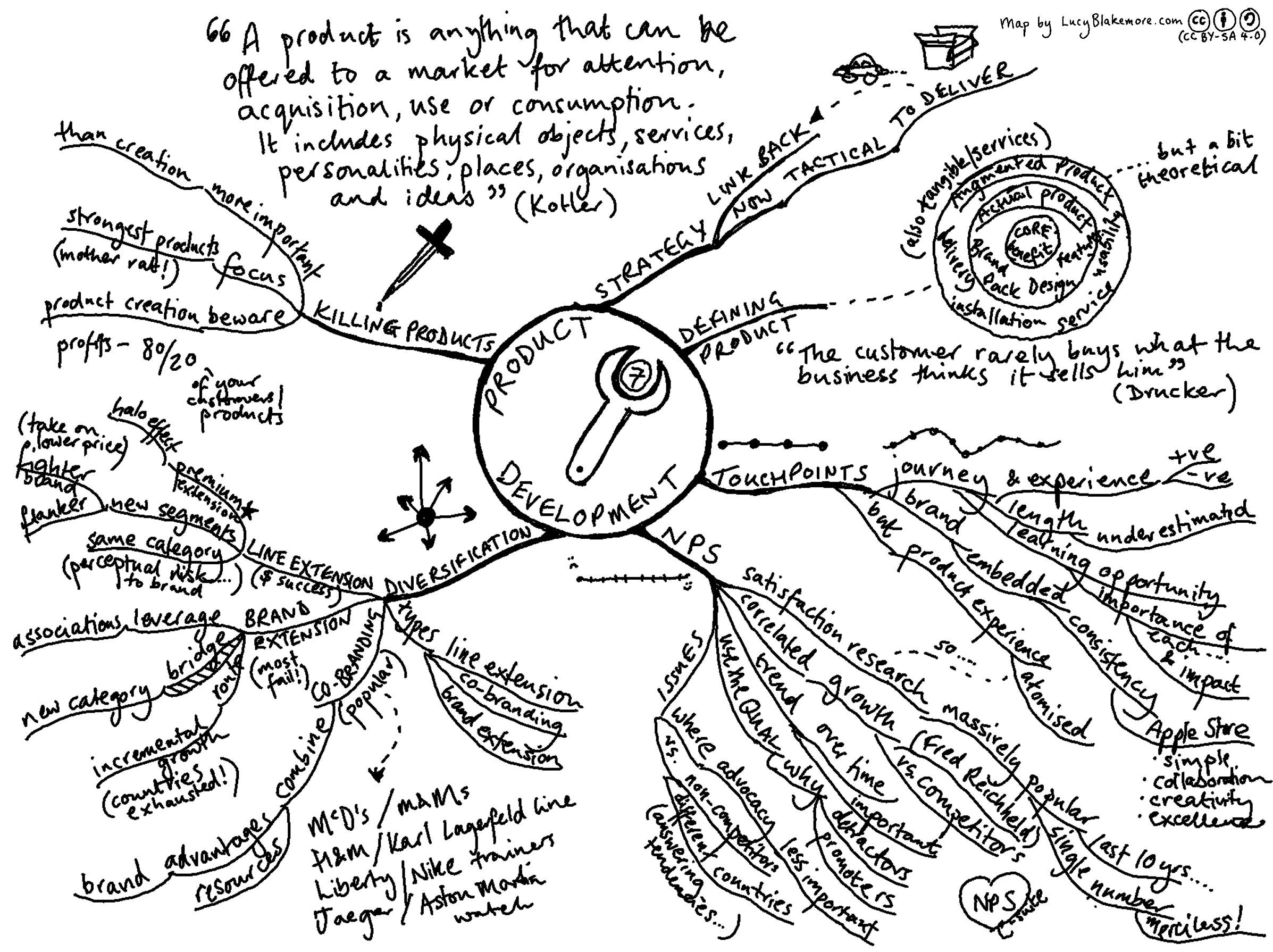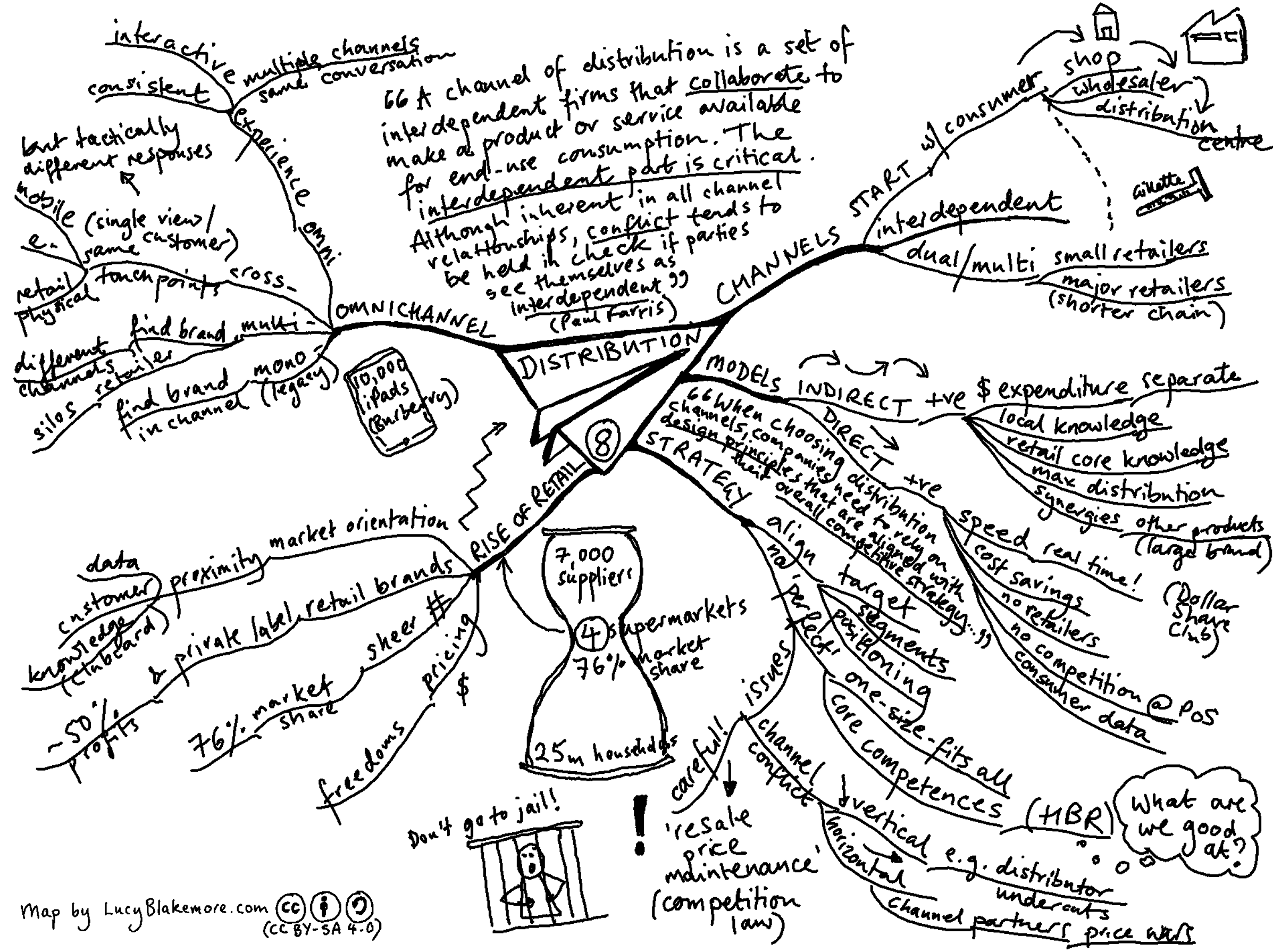MBA marketing wrap: Why read the classics?
“Classics are books which, the more we think we know them through hearsay, the more original, unexpected, and innovative we find them when we actually read them." (Italo Calvino, Why Read The Classics)
This is the follow-up post to 'MBA marketing strategy in 6 mindmaps', re-sharing notes I made during the Marketing Week Mini MBA with Mark Ritson late last year. Since I wrote that first post, Mark helpfully published an article nicely framing the second half of the course, which moves from strategy to tactics. In his article, he describes the marketing mix as a checklist; "A way of thinking about tactical execution that helps in the final third of the marketing process. It is beguilingly simple but fantastically applicable."
Mark also highlights many attempts to re-fashion, re-write or extend the classic 4 P's of marketing, and makes his usual solid arguments for why this doesn't usually get us anywhere. You can read Mark's article in full in Marketing Week.
Just like classic works of fiction, the four marketing P's of product, place, price and promotion seem to be timeless, yet somehow keep us talking, debating and making good use of them. Or as Calvino says:
"A classic is a work which constantly generates a pulviscular* cloud of critical discourse around it, but which always shakes the particles off"
*dusty, resembling a fine powder. Possibly a made-up word by the author.
So here they are, those dusty, ever-so-relevant marketing P's that just keep giving. As with the first 6 modules, I'll let the maps speak for themselves, along with some favourite quotes from the course and a soundtrack that tunes into some key concepts for each module.
Module 7: Product Development (product)
“The customer rarely buys what the business thinks it sells him.”
Peter Drucker
🎧 Soundtrack: ‘What's Your Flava?’, by Craig David
Module 8: Distribution (place)
“When choosing distribution channels, companies need to rely on design principles that are aligned with their overall competitive strategy and performance objectives.”
Erin Anderson
🎧 Soundtrack: ‘All Roads Lead Home’, by Golden State
Module 9: Pricing (price)
“Marketing is the activity, set of institutions, and processes for creating, communicating, delivering, and exchanging offerings that have value for customers, clients, partners, and society at large.”
American Marketing Association
🎧 Soundtrack: ‘Hold The Line’, by TOTO
Module 10: Integrated Marketing Communications (promotion)
“Everything is digital. We should not separate, we should integrate. We want to change the perception of our brand but to do that we need to engage, be part of the discussion.”
Roel De Vries
🎧 Soundtrack: ‘Synergy’, by Tash Sultana
Module 11: Brand
“Around a third of the total of financial value of stock markets today can be accounted for by brands, making them a company's most important single asset. It makes logical sense that the brand should be the organising principle by which competitive advantage is stitched into everything an organisation does - in products and services, in people and behaviour, in environments and channels and, of course, in communications.”
Rita Clifton
🎧 Soundtrack: ‘What You Think of Me’, by Mabel Ye
Postscript: The final exam
I haven't included my exam notes here; these still provoke mild trauma from the segmentation and positioning task, where we not only sized and valued a fictional photocopier market, but then had to fire two of our sales team based on our strategic choices.
As far as the exam goes, I will say this: being given three weeks and open permission to 'cheat' in the LinkedIn group with others from the course made me engage with and question the material way more than I ever have in a traditional, closed-book exam. Perhaps some 'classics' are meant to be challenged, after all.
So thank you Mark, and thank you 'Jim' for taking the concept of a 'real-life' case study boss to the next level on LinkedIn (as well as scaring the bejeezus out of some fully grown adults). You certainly don't mess around with Jim.
Photo by Annie Spratt on Unsplash






